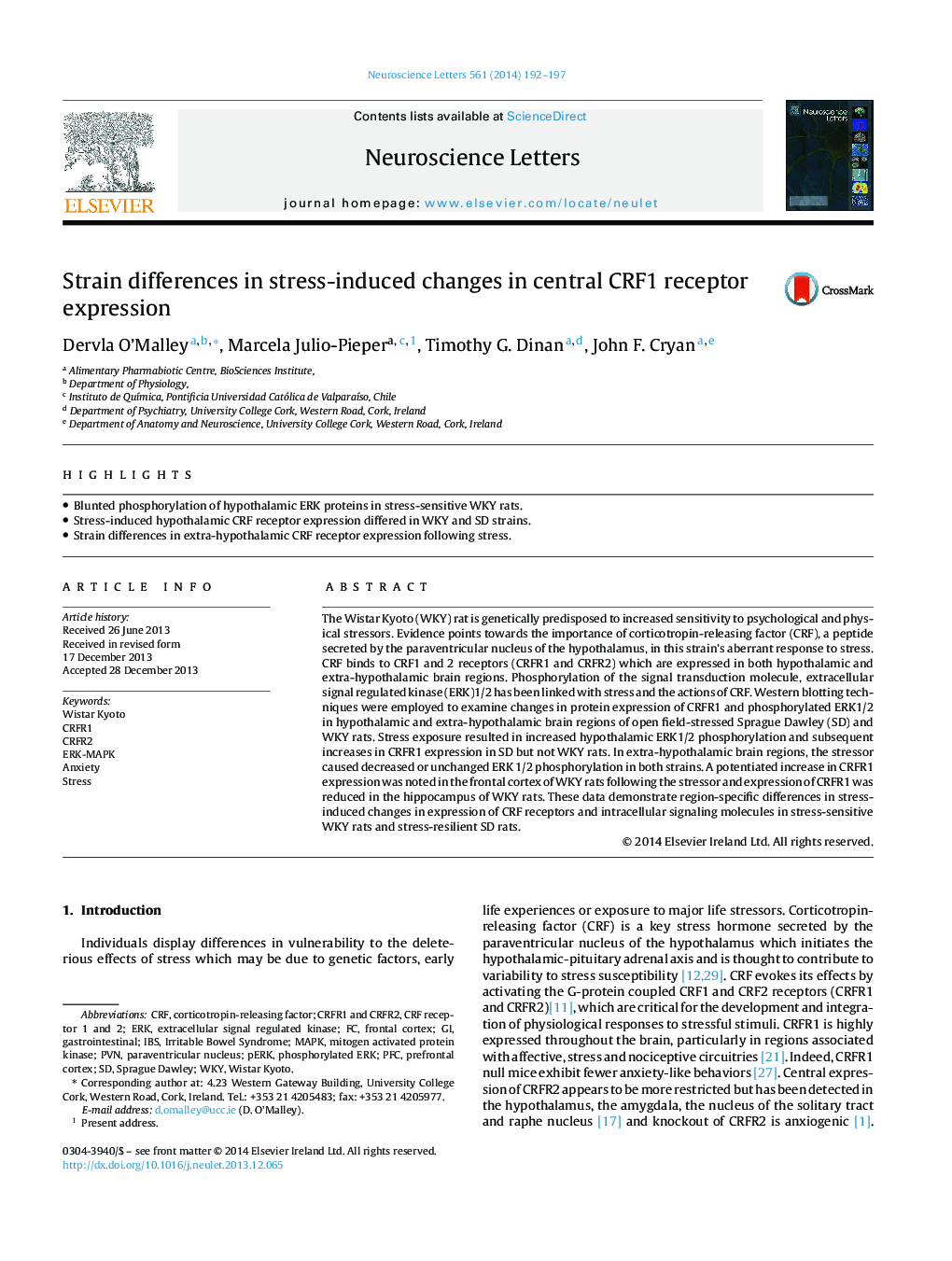| Article ID | Journal | Published Year | Pages | File Type |
|---|---|---|---|---|
| 4343873 | Neuroscience Letters | 2014 | 6 Pages |
•Blunted phosphorylation of hypothalamic ERK proteins in stress-sensitive WKY rats.•Stress-induced hypothalamic CRF receptor expression differed in WKY and SD strains.•Strain differences in extra-hypothalamic CRF receptor expression following stress.
The Wistar Kyoto (WKY) rat is genetically predisposed to increased sensitivity to psychological and physical stressors. Evidence points towards the importance of corticotropin-releasing factor (CRF), a peptide secreted by the paraventricular nucleus of the hypothalamus, in this strain's aberrant response to stress. CRF binds to CRF1 and 2 receptors (CRFR1 and CRFR2) which are expressed in both hypothalamic and extra-hypothalamic brain regions. Phosphorylation of the signal transduction molecule, extracellular signal regulated kinase (ERK)1/2 has been linked with stress and the actions of CRF. Western blotting techniques were employed to examine changes in protein expression of CRFR1 and phosphorylated ERK1/2 in hypothalamic and extra-hypothalamic brain regions of open field-stressed Sprague Dawley (SD) and WKY rats. Stress exposure resulted in increased hypothalamic ERK1/2 phosphorylation and subsequent increases in CRFR1 expression in SD but not WKY rats. In extra-hypothalamic brain regions, the stressor caused decreased or unchanged ERK 1/2 phosphorylation in both strains. A potentiated increase in CRFR1 expression was noted in the frontal cortex of WKY rats following the stressor and expression of CRFR1 was reduced in the hippocampus of WKY rats. These data demonstrate region-specific differences in stress-induced changes in expression of CRF receptors and intracellular signaling molecules in stress-sensitive WKY rats and stress-resilient SD rats.
